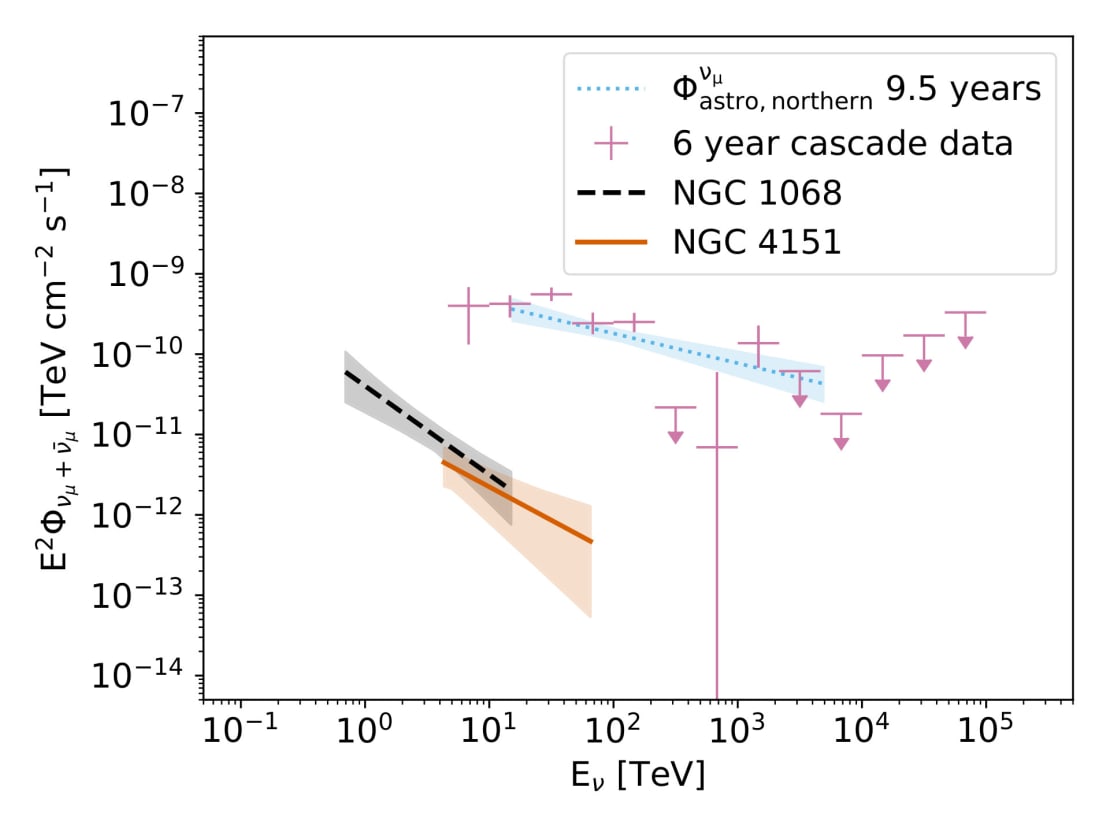Ever since high-energy astrophysical neutrinos were first observed in 2013, the IceCube Neutrino Observatory at the South Pole has been hunting for their astronomical sources. Active galactic nuclei (AGNs) are promising candidates as sources of astrophysical neutrinos given their very high levels of electromagnetic emission—from radio waves to gamma rays—that can outshine their host galaxies and their ability to produce enormous amounts of energy as matter gets sucked into a central supermassive black hole.
Thus far, evidence of high-energy neutrino emission from AGNs has been found from TXS 0506+056 and NGC 1068. Although models of high-energy neutrino emission from AGNs suggest the accompaniment of gamma rays, there has been a lack of a clear association between neutrinos and gamma-ray bright AGNs. This prompted newer models to propose that high-energy neutrinos are emitted from AGNs with a core enveloped by dust and gas where gamma rays are reprocessed into hard X-rays, the highest energy X-rays.
The IceCube Collaboration presents a search for neutrino emission from AGNs observed in hard X-rays, a probable source of high-energy neutrinos. Their results are included in a paper submitted to The Astrophysical Journal alongside a companion IceCube paper searching for neutrino emission from X-ray bright Seyfert galaxies similar to NGC 1068.

Using 12 years of IceCube data on throughgoing muon tracks, the search was performed employing two analyses: 1) a stacked search looking at the cumulative neutrino signal from a population of sources and 2) an individual source search. For both searches, the Swift-BAT AGN Spectroscopic Survey (BASS) containing a catalog of hard X-ray AGNs was used, with 43 sources singled out for the individual search.


“We found that two Seyfert galaxies, NGC 1068 and NGC 4151, show excess neutrino emission,” says Sreetama Goswami, a postdoctoral scholar at the University of Nevada, Las Vegas. ”However, we do not observe a significant emission from the entire class of AGNs observed in hard X-rays or any of its subclasses.”
Goswami led the study along with coauthor James DeLaunay, a research assistant professor at Penn State University.
This work adds to the growing body of evidence that point to AGNs as promising neutrino emitters.
“In the future, we will analyze specific classes of AGNs with highly obscured cores using more precise X-ray data,” says Goswami.
+ info “Search for neutrino emission from hard X-ray AGN with IceCube,” IceCube Collaboration: R. Abbasi et al., Submitted to The Astrophysical Journal, arxiv.org/abs/2406.06684